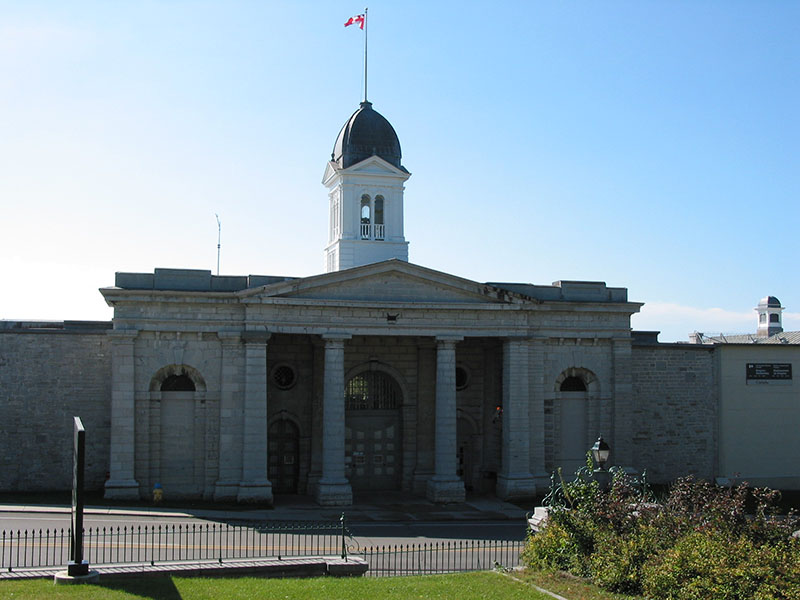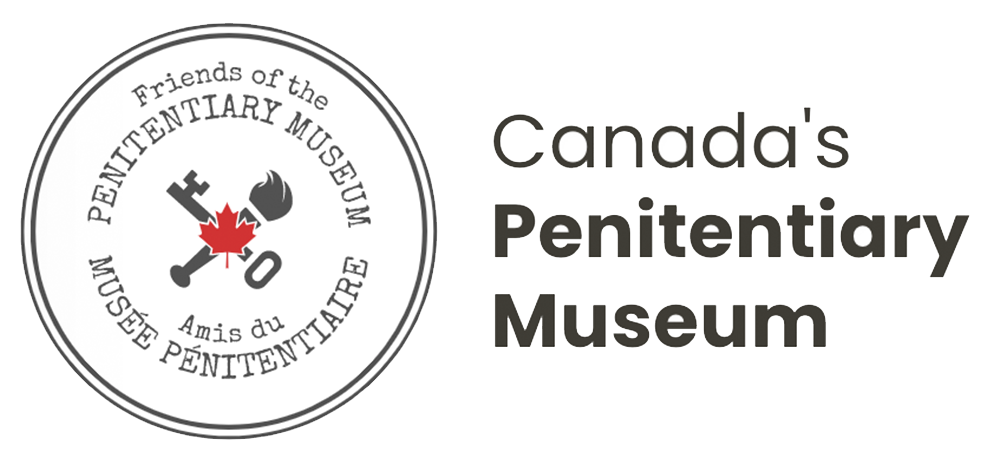WHY ARE THERE SO MANY PENITENTIARIES IN KINGSTON?
The province of Ontario has long been the most densely populated region of Canada. As a result, more prisons were built to accommodate higher crime rates. The expertise required to operate prisons and the inmate labour force required to build them was already here. Kingston is also central to Toronto, Ottawa and Montréal.
In the 1940s and early 1950s, facilities started to be classified based upon security level. The expected increase in transfers of inmates between facilities meant it would be more cost-effective to build new institutions near ones already in existence. That is why Joyceville Institution, Canada's first "Medium-Minimum" penitentiary, was built to the northeast of Kingston in 1959.
In the early 1960s, minimum-security farm camps were set up on the Joyceville (Pittsburgh Institution) and Collins Bay (Frontenac Institution) sites.
Millhaven Institution opened prematurely in 1971, as a result of a major riot at K.P. In 1972, Bath Institution opened as a minimum-security facility on the grounds of Millhaven Institution. K.P. then became the "Regional Reception Centre (Ontario)". It functioned as a processing point for new admissions until 1980 when it became a "maximum security, protective custody" facility to house offenders deemed to require extra protection from general populations elsewhere. In 1990, Isabel Macneill House opened in the old Deputy Warden's residence for K.P. Isabel Macneill House was a "pre-release" facility for women. Because of the rules under which it operated - offenders could not leave the grounds unescorted and staff members were present 24 hours a day. As such, it was considered an "institution"
HOW DOES A “PENITENTIARY” DIFFER FROM A “GAOL” (JAIL)?
This is a subject for debate, but the distinction between "penitentiary" and "Gaol" (pronounced "Jail") is important. Generally, the early "Gaols" that predated the opening of the Provincial Penitentiary of Upper Canada in 1835 were small facilities operated by administrative 'Districts' that focused solely upon the punishment of crime. "Penitentiaries", on the other hand, have always focused upon punishment coupled with the ultimate goal of rehabilitation. In more recent history, provincial jails have also incorporated rehabilitation programs.
Today, the main criteria that distinguishes "Gaols/Jails" and "penitentiaries" is that provincial jails house adult and youth offenders serving sentences of two-years less a day and shorter. Penitentiaries house adult offenders serving two years or more. Another obvious distinction is that in Canada, "provincial jails" are administered by their respective provinces, while "penitentiaries" are administered by the federal government.
WHEN DID CANADA’S FIRST PENITENTIARY OPEN?
The land upon which Kingston Penitentiary stands was purchased by the government as the site of the first "penitentiary" on May 30th, 1833. The site was considered to be "separate and away" from the town of Kingston, because it was some 2-miles (approx. 3.2 kms) West of the town line. Even though the first cell-block was standing by 1834, the official opening of Canada's first penitentiary did not occur until the arrival of the first inmates on June 1, 1835.
On that date inmates #1 Matthew Tavender, #2 John Hamilton, #3 Edward Middlehurst, #4 John O'Rorke, #5 John Dyas, and #6 Joseph Bouchette, were transferred to the penitentiary from the Midland District Gaol in Kingston (located at the corner of the present Clarence and King Street East). They had been held there for a month while awaiting the opening of the institution.
It should be noted that there were "Gaols" (pronounced "jails") in existence in Canada prior to 1835, but the "Provincial Penitentiary of Upper Canada" at Kingston was the first "penitentiary" in British North America designed to rehabilitate as well as punish offenders of the law.
WHO WAS THE FIRST INMATE SENTENCED IN CANADA?
The first person to have actually been sentenced by the courts in Canada to serve a 'penitentiary term' was Joseph Bouchette (also shown as Bonichette; Bonsette; Boushette). He was sentenced in the Newcastle District (now the Northumberland County, Ontario area) to serve 5 years for "Grand Larceny" on January 14, 1835.
However, Mathew Tavender was entered into the 'Convict Register' as "Inmate # 1". This simply meant that he was the first man in the first group of inmates to be entered into the register when they arrived at the penitentiary on June 1, 1835. Inmate Bouchette was entered as # 6.
WHO WAS THE FIRST FEMALE INMATE?
As it happened, three women were sentenced to serve penitentiary terms on the same day, August 28, 1835. All were from the Gore District (the Hamilton, Ontario area). They were inmates # 33 - Susan Turner; # 34 - Hannah Downes and # 35 - Hannah Baglen. All were sentenced for the crime of "Grand Larceny".
Susan Turner and Hannah Downes were sentenced to serve 1 year, and Hannah Baglen was sentenced to 2 years. Despite her longer sentence, Hannah Baglen was actually the first of the three to be released, approximately 4 months in advance of the others.
WHO WAS THE YOUNGEST FEMALE INMATE?
The youngest female inmate appears to have been # 9207 - Sarah Jane Pierce, a 9 year old from Brockville, Ontario. She was sentenced on March 4, 1878 for house breaking and larceny and given a 7 year sentence. Among the items that she was found guilty of stealing were a quilt, a ladies hat, a towel, a pitcher, some beef, raisins, biscuits, tea and sugar. Her mother received a sentence of 6 months in the County Gaol for receiving the stolen goods.
WHO WAS THE YOUNGEST MALE INMATE?
Based upon our research, the youngest inmate to be sentenced to a Canadian penitentiary was 8 year old Antoine Beauché (# 1492), a pick-pocket from Québec. He was sentenced along with his older brothers, Louis (aged 12; #1490) and Narcisse (aged 19; #1491) and a friend, Francis Bernard (aged 12; # 1493) on Oct. 22, 1845. Even at that young age, the court described them as "old offenders" and "experienced pick-pockets". All were given sentences of 3 years for their attempt to pick a pocket aboard the steam-boat "Sydenham" on the St.Lawrence River between Québec City and Montréal.
Records show that Antoine received the lash within a week of his arrival at the penitentiary. Over a period of 9 months he received it on 47 occasions for such offences as staring, laughing, whistling, giggling, making noise in his cell, having tobacco and idling. The Commissioners appointed to investigate the management of the penitentiary in 1848 commented that they found the treatment of this child to be "another case of revolting inhumanity". This was one of the factors that led to the dismissal of the first Warden, Henry Smith.
WHAT WAS THE ORIGINAL FUNCTION OF THE MUSEUM BUILDING?
The museum building, originally known as "Cedarhedge", was built between 1870 and 1873 as the official residence for the Warden of Kingston Penitentiary and his family. Erected using inmate labour, the house received its name in recognition of the extensive cedar hedges that once lined the entrance drive. The house originally included a green-house, vinery, conservatory and a coach-house. These portions were removed by 1978 in order to accommodate the new wall of the former Prison for Women to the rear of the house.
In 1933, as a result of the 1932 Kingston Penitentiary riot, the house was converted for use as administration offices for Kingston Penitentiary and the Prison for Women. Then, in 1985, the "Correctional Service of Canada Museum" was relocated here. In 1992, the last of the Kingston Penitentiary offices were relocated to the interior of the institution and the museum has grown to occupy the entire structure. For more information about the history of the museum building, see the section entitled "Cedarhedge".

How many penitentiaries have there been in the Kingston area? At its peak, there were 10 penitentiaries in active operation in the Greater Kingston Area:
1) Kingston Penitentiary (Max.)
Opened in 1835 as the "Provincial Penitentiary of the Province of Upper Canada".
2) Regional Treatment Centre (Max.)
An accredited forensic psychiatric facility located within the Kingston Penitentiary compound. Established as a separate institution in 1972.
3) Isabel Macneill House (Min.)
Established 1990. Operated as a pre-release facility for women offenders. Closed January 2009.
4) Collins Bay Institution (Med.)
Opened in 1930. Originally known as the "Preferred Class Penitentiary (Ontario)" until 1932.
5) Frontenac Institution (Min.)
Officially opened as the "Collins Bay Farm Annex" in 1962.
6) Millhaven Institution (Max.)
Established in 1971, it was originally intended to replace Kingston Penitentiary as the Maximum-security institution in Ontario.
7) Bath Institution (Med.)
Opened in 1972 next door to Millhaven Institution.
8) Joyceville Institution (Med.)
Opened in 1959, as Canada's first "minimum/medium institution".
9) Pittsburgh Institution (Min.)
Established in 1962 beside Joyceville Institution.
10) Prison for Women (Multi.)
Established in 1934. Operated as the only federal women's penitentiary in Canada until 1995. This institution was decommissioned on July 6, 2000.
